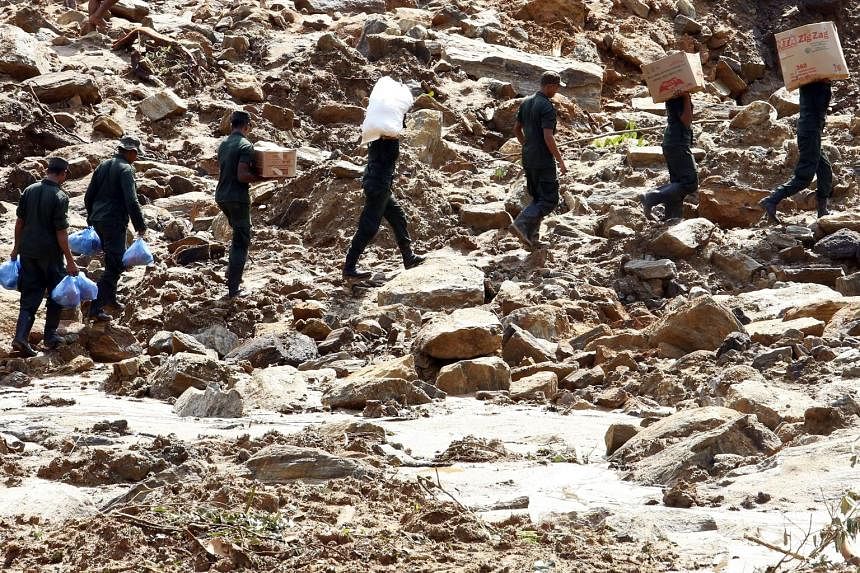COLOMBO • Emergency teams rushed food and water yesterday to half a million Sri Lankans displaced by the island's worst flooding in more than a decade, as the death toll climbed to 151.
Government spokesman Rajitha Senaratne said relief operations had intensified following a break in the monsoon rain, with medical teams reinforcing hospitals in affected districts.
The official death toll had climbed to 151, with 111 people still listed as missing, said Mr Senaratne. Another 95 were in hospital.
"Aid is now getting into the remotest areas, which remained inaccessible in the past two days," Mr Senaratne told reporters, adding that there are helplines for people to call if they need assistance.
Most victims were killed by landslides, not the flood waters, as their homes on hillsides were buried under torrents of mud and rock.
Nearly 2,000 houses were damaged or destroyed. Almost half a million people were forced from their homes and are sheltering in government buildings or with friends and relatives.
The floods and landslides in the south and west of the island were the worst for 14 years.
Water levels in Ratnapura, the gem-mining district east of Colombo, had subsided, but many villages in Kalutara south of the capital were still under water, said officials.
Residents in the south of the island also face the threat of crocodile attacks after a river known for its dangerous wildlife burst its banks overnight.
The charity Save the Children said about a tenth of those displaced were under the age of five.
It raised concerns about stagnant flood waters becoming breeding grounds for dengue-spreading mosquitoes, and noted that young children were more vulnerable.
Medical teams were sent to the worst-hit areas to help prevent an outbreak of waterborne diseases.
"We have the expertise to deal with this situation," said Mr Senaratne, adding that cholera and diarrhoea had been successfully prevented in past floods.
The government withdrew an evacuation order for thousands of residents in the southern district of Matara as water levels subsided.
The military has deployed helicopters, boats and amphibious vehicles to distribute aid pouring in from residents in areas not affected by the floods.
The government appealed for bottled water, clothes and dry rations for those displaced.
Sri Lanka has also sought international assistance. India has sent a second naval ship with medicines, inflatable boats and medical teams to join the relief operations.
The flooding is the worst since May 2003, when 250 people were killed and 10,000 homes destroyed after a similarly powerful monsoon, said officials.
AGENCE FRANCE-PRESSE

